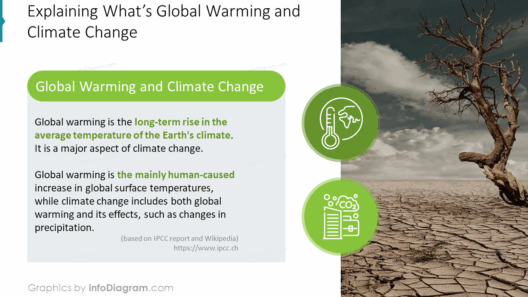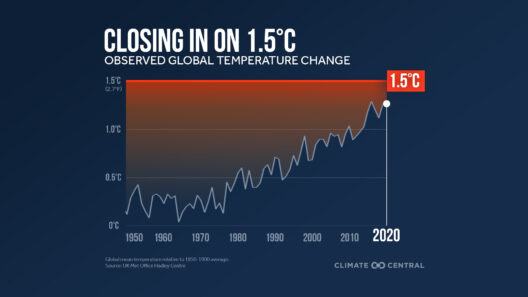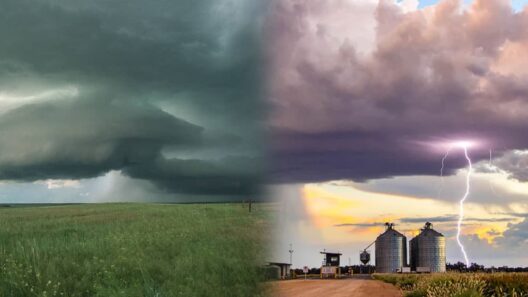Climate, a multifaceted phenomenon, encompasses the long-term weather patterns and averages that define a particular region. While often conflated with weather, which describes short-term atmospheric conditions, climate delves deeper into the prolonged time-frame—typically spanning decades or even centuries. This differentiation is crucial in understanding how climate influences ecosystems, human societies, and our planet’s overall health.
To comprehend climate in a comprehensive manner, it’s imperative to explore various dimensions: key definitions, factors impacting climate, different types of climate, climate systems, and the implications of climate change. Each of these aspects offers a layer of understanding that is essential for engaging with the broader discourse on global patterns.
Defining Climate
At its core, climate refers to the average temperature, humidity, atmospheric pressure, wind, precipitation, and other meteorological elements that prevail in a specific area over an extended period. The World Meteorological Organization (WMO) describes climate as the “average weather,” placing the emphasis on periods of 30 years or more. This long-view perspective is essential for scientists and policymakers alike as they develop strategies to mitigate and adapt to climate-related challenges.
Factors Influencing Climate
Several key factors contribute to the climate of a region:
- Latitude: The distance from the equator substantially influences temperature and weather patterns. Areas near the equator typically experience warmer climates, while polar regions undergo frigid conditions.
- Altitude: Elevation affects climate, as higher altitudes typically experience lower temperatures. The Himalayas serve as a prime example; their lofty peaks host glaciers even in regions that would otherwise be temperate.
- Proximity to Water: Oceans and large lakes moderate climate. Regions near large bodies of water tend to have milder climates compared to those far inland, which endure more extreme temperatures.
- Topography: Mountains and valleys can create rain shadows, influencing precipitation patterns. Windward sides of mountains receive abundant rain, while leeward sides experience aridity.
- Human Activity: Anthropogenic effects on climate are significantly profound. Urbanization, deforestation, and greenhouse gas emissions modify climate patterns and can lead to the phenomenon of climate change.
Diverse Climate Types
Global patterns of climate can be categorized into several predominant types:
- Tropical Climates: Characterized by warm temperatures and high humidity, tropical regions experience significant rainfall. The Amazon Basin showcases this climate type, supporting lush biodiversity.
- Arid and Semi-Arid Climates: These regions exhibit low precipitation levels, leading to deserts like the Sahara. The scarcity of moisture dictates the flora and fauna that can survive, leading to a unique ecosystem.
- Temperate Climates: Found in regions like the Mediterranean, these climates boast moderate temperatures and seasonal variation. They support diverse ecosystems, from deciduous forests to grasslands.
- Polar Climates: Dominated by frigid temperatures throughout the year, polar climates are characterized by ice caps and tundra regions. The Arctic and Antarctic offer compelling representations of this climate type.
Climate Systems
Understanding climate also requires a grasp of the broader climatic systems that govern atmospheric behavior: the global circulation patterns, ocean currents, and the interaction between land and atmosphere. The Coriolis effect, driven by the Earth’s rotation, influences wind patterns and ocean currents, leading to diverse climate conditions across the globe. El Niño and La Niña phenomena illustrate how ocean surface temperatures can radically influence weather patterns, leading to droughts or floods across various regions.
The Implications of Climate Change
The most pressing concern regarding climate is the ongoing phenomenon of climate change. Driven predominantly by human activities, such as burning fossil fuels and deforestation, climate change threatens to disrupt the delicate balance of ecosystems, amplify extreme weather events, and exacerbate resource scarcity. The Intergovernmental Panel on Climate Change (IPCC) warns of potential consequences such as sea-level rise, changes in precipitation, and increased frequency of natural disasters.
Additionally, climate change poses serious implications for agriculture, water supply, and biodiversity. For instance, crop yields may diminish in some regions, while invasive species may thrive in warming ecosystems. The repercussions extend to health, as changing climates can lead to the proliferation of disease-carrying organisms.
Conclusion
To fully grasp climate and its significance, one must consider it as a dynamic interplay of various elements influencing the Earth over time. Knowledge of climate is not merely academic; it is a practical necessity. Engaging in climate action, whether by adopting sustainable practices, advocating for policies, or supporting renewable energy initiatives, is imperative as society confronts these critical challenges. A robust understanding of climate fosters informed decisions that can equip individuals and communities to mitigate and adapt to the effects of a changing world.







